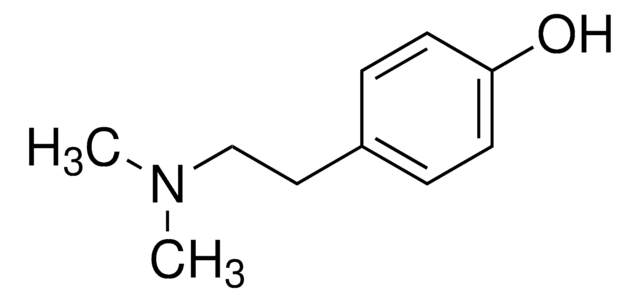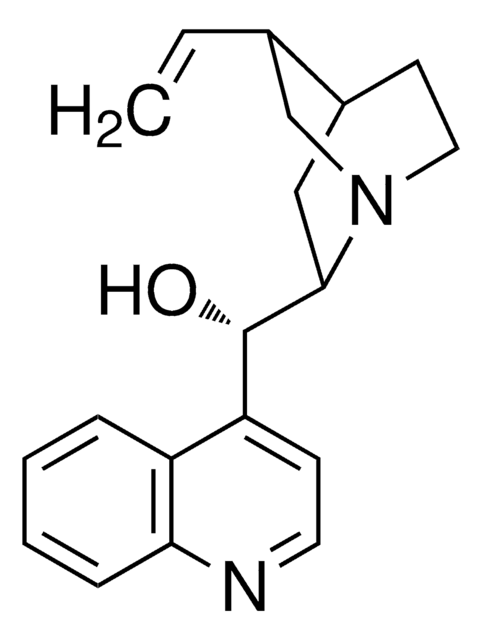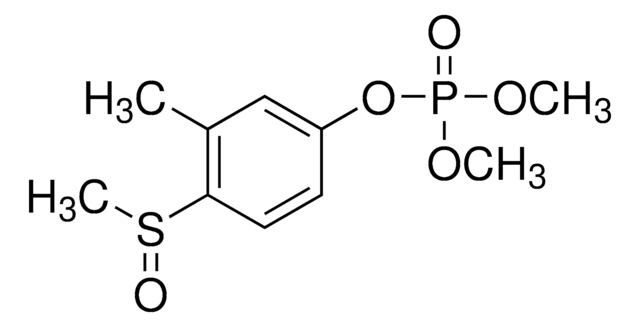04476
Hordenine
≥97.0% (HPLC)
Sinonimo/i:
2-(4-Hydroxyphenyl)-N,N-dimethylethylamine, 4-(2-Dimethylaminoethyl)phenol, N,N-Dimethyltyramine, p-Hydroxy-N,N-dimethylphenethylamine, Anhaline, Cactine, Eremursin, Peyocactine
About This Item
Prodotti consigliati
Saggio
≥97.0% (HPLC)
Forma fisica
powder or crystals
applicazioni
metabolomics
vitamins, nutraceuticals, and natural products
Stringa SMILE
CN(C)CCc1ccc(O)cc1
InChI
1S/C10H15NO/c1-11(2)8-7-9-3-5-10(12)6-4-9/h3-6,12H,7-8H2,1-2H3
KUBCEEMXQZUPDQ-UHFFFAOYSA-N
Cerchi prodotti simili? Visita Guida al confronto tra prodotti
Categorie correlate
Applicazioni
Azioni biochim/fisiol
Confezionamento
Avvertenze
Warning
Indicazioni di pericolo
Consigli di prudenza
Classi di pericolo
Eye Irrit. 2 - Skin Irrit. 2 - STOT SE 3
Organi bersaglio
Respiratory system
Codice della classe di stoccaggio
11 - Combustible Solids
Classe di pericolosità dell'acqua (WGK)
WGK 3
Punto d’infiammabilità (°F)
Not applicable
Punto d’infiammabilità (°C)
Not applicable
Certificati d'analisi (COA)
Cerca il Certificati d'analisi (COA) digitando il numero di lotto/batch corrispondente. I numeri di lotto o di batch sono stampati sull'etichetta dei prodotti dopo la parola ‘Lotto’ o ‘Batch’.
Possiedi già questo prodotto?
I documenti relativi ai prodotti acquistati recentemente sono disponibili nell’Archivio dei documenti.
Il team dei nostri ricercatori vanta grande esperienza in tutte le aree della ricerca quali Life Science, scienza dei materiali, sintesi chimica, cromatografia, discipline analitiche, ecc..
Contatta l'Assistenza Tecnica.









